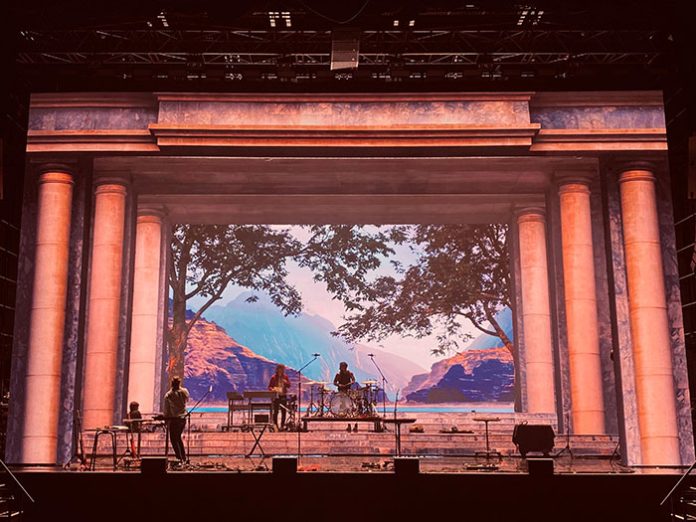Phoenix elevated its worldwide tour with visuals and effects powered by SMODE.
Phoenix tour’s video content was created by Vincent Leroy, SMODE programmer and operator for the tour, based on a set design by famous lighting designer Pierre Claude (The Strokes, Gesaffelstein, Phoenix, AIR). SMODE was chosen for the scenic project, to mix visual sequences, images from different sources, optical illusions, and vibrant 3D effects.
The show’s design phase started in January 2022 when the creative team tried out a number of concepts and came up with the final idea in line with the spirit of the band.
The initial setup included a 14 eight metres LED backwall and three extra LED frames spread over a depth of 10m. “We started the tour [in May 2022] with five dates on completely different stages, including festivals of various sizes. For some dates, the complete scenography was barely fitting,” Leroy commented. “We had to re-think it in a more flexible way.”
Throughout the two years of the tour, the scenography went through multiple adaptations to fit different venue types and sizes, various LED panels dimensions, but also incorporated the bands frequent new ideas.Therefore, Leroy encoded the architecture of the show and the composition of the graphic elements for each look in SMODE, based on linked-parameters automatically calculated from the height and width of the frames. He was able to switch between versions of the set design in a few clicks, and the visuals would automatically adapt; all while staying within the same SMODE show file.
The dimensions and ratio of the frames and backwall changed so often that it was important to have a media server featuring a real-time compositing engine. “It would have been impossible to be as flexible as it was without the SMODE media server,” Leroy explained. “For some dates, hanging the frames is simply not an option, so we use the LED BackWall to simulate trompe-l’œil frames.”
“Because a ‘frame’ has both inner and outer edges, I couldn’t just stretch the content to fill the whole area: the visual assets were designed to give a meaning to the frames, for example with a perspective illusion on the inner edge that adds a sensation of depth. Matching the inner edges is the most important,” he added. For the outer edges, Leroy uses different techniques, depending on the situation: “For one look, I cut the frames into several zones, and I stretch each zone differently; some other times, I mirror the outer edges to fill the entire surface.”
For video show control, Vincent uses two SMODE servers: one as a ‘main’ and the other as a ‘back-up’ and made daily use of SmodeNET. While all changes were synched between both servers in real time, Leroy can work on a track on the ‘back-up’ server while Pierre playbacks on stage with the ‘main’ server, controlled from the lighting desk. “This double playback facilitates our work, especially when the timing is tight,” he added.
“Phoenix’s show evolves daily on tour, and I could not have embarked on this adventure and kept it this flexible without SMODE,” concluded Leroy. “The freedom offered by the media server allowed me to create visually stunning visuals to the show that responded to the rhythm and mood of the music, leaving a lasting impression on the audience.”





